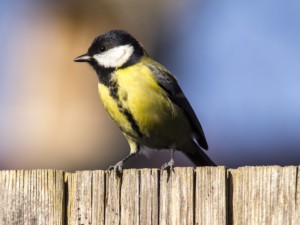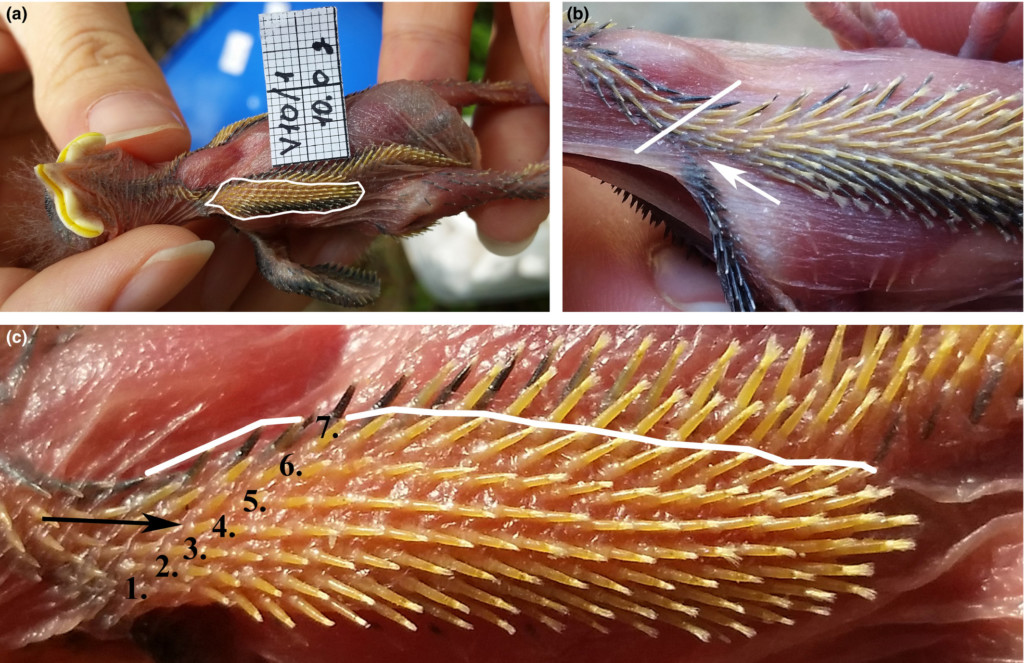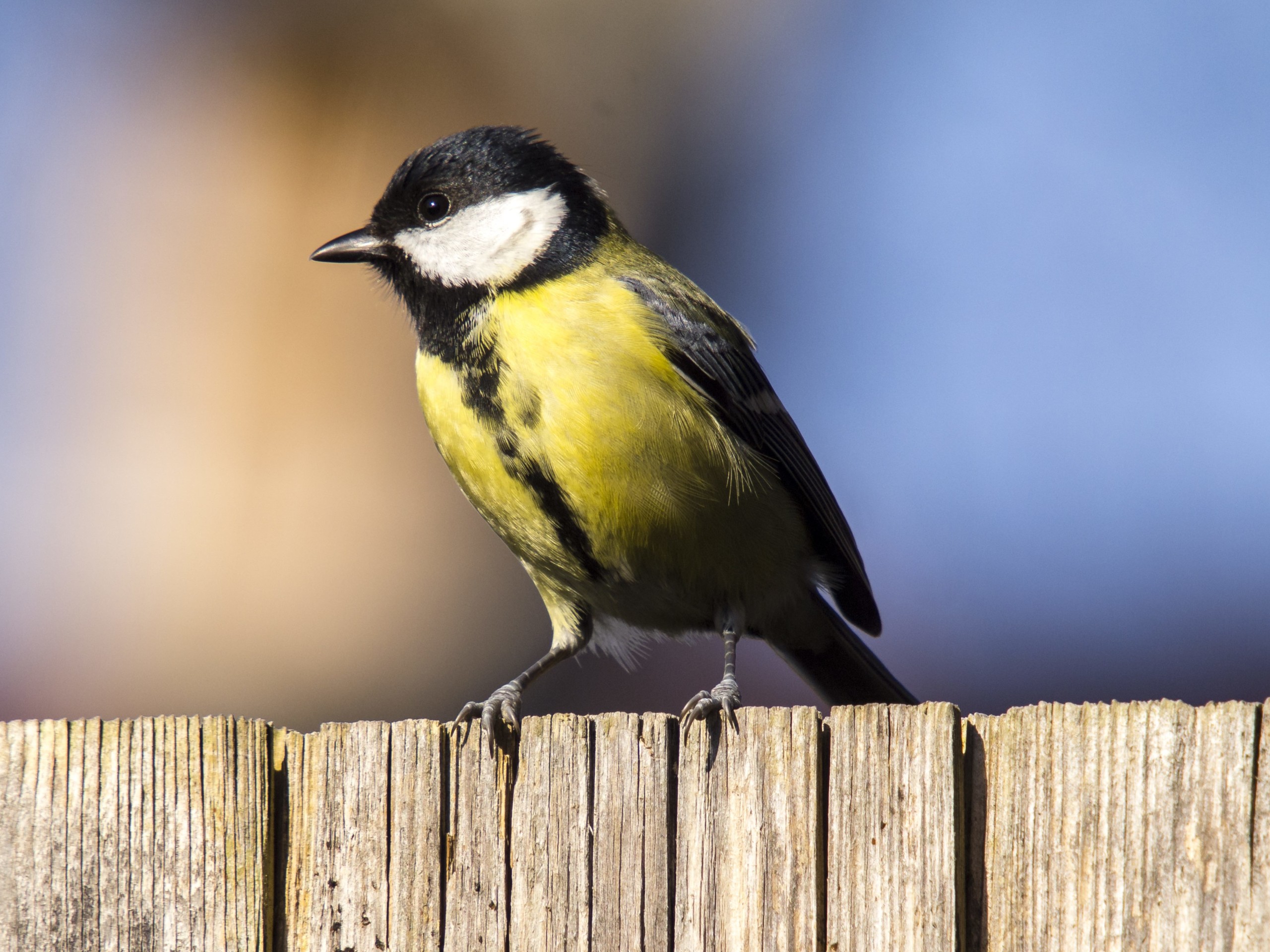
LINKED PAPER
Urban nestlings have reduced number of feathers in Great Tits (Parus major). Sándor, K., Liker, A., Sinkovics, C., Péter, Á., & Seress, G. 2021. IBIS. DOI: 10.1111/ibi.12948. VIEW
Urban nestlings have fewer feathers than forest nestlings. A group of Hungarian ornithologists made this intriguing observation when they counted the number of feather tips on Great Tit (Parus major) nestlings that were 6 to 9 days old. The researchers monitored the nestlings in nest boxes around two Hungarian cities (Balatonfüred and Veszprém) and in forest sites near the village of Szentgál. In each nest box, they selected three young birds and took pictures of the feather tracts on their bellies. When they counted the number of developing feathers on these tracts, they discovered that urban birds sported fewer feathers compared to birds in the forest. What mechanism could explain this striking difference?
Cooling down
The researchers offer two possible explanations for the reduced number of feathers on urban nestlings. The first explanation relates to thermoregulation. Ambient temperatures tend to be higher in cities (i.e. the so-called urban heat island effect, Oke 1982). This effect might be even more pronounced in cavities and artificial nest boxes where temperatures can be several degrees higher than outside (Maziarz et al. 2017). Having fewer feathers results in more patches of bare skin where nestlings can more efficiently dissipate heat (Jiang et al. 2010). Experimental work on captive poultry already showed that the incubation temperature of the eggs affects the number of feather follicles that embryos develop (Scott et al. 2015). It is easy to imagine that a similar process occurs in wild birds.

Figure 1. The researchers took photographs of the ventral feather tracts of Great Tit nestlings to count the number of developing feathers.
City food
Apart from temperature, food availability might also have an effect on the feather development of young birds. Compared to the country side, urban environments tend to house less arthropods (Fenoglio et al. 2020). However, cities also offer a large amount of low-quality food items, such as discarded fast food and other garbage. This change in food palette might influence the body condition of female birds, which consequently impacts the number of feathers that their nestlings develop. This effect has been experimentally shown in captive poultry (Dahlke et al. 2008). Both explanations – thermoregulation and food availability – are plausible and not mutually exclusive. More research is thus needed to disentangle these putative mechanisms. But regardless of the underlying mechanism, it is fun to contemplate that a Great Tit in the city probably has fewer feathers than its friends in the forest.
References
Fenoglio, M.S., Rossetti, M.R. & Videla, M. (2020). Negative effects of urbanization on terrestrial arthropod communities: A meta-analysis. Global Ecology and Biogeography 29: 1412– 1429. VIEW
Jiang, R.S., Xia, W.T., Chen, X.Y., Geng, Z.Y. & Hu, Z.Y. (2010). Density of contour feathers and heat tolerance in chickens. Journal of Applied Animal Research 38: 253– 255. VIEW
Maziarz, M., Broughton, R.K. & Wesołowski, T. (2017). Microclimate in tree cavities and nest-boxes: Implications for hole-nesting birds. Forest Ecology and Management 389: 306– 313. VIEW
Oke, T.R. (1982). The energetic basis of the urban heat island. Quarterly Journal of the Royal Meteorological Society 108: 1– 24. VIEW
Scott, J., Da Costa, M.J. & Oviedo-Rondón, E.O. (2015). Incubation temperature profiles affect broiler feathering. Journal of Applied Poultry Research 24: 49– 57. VIEW
Image credits
Top right: Great Tit (Parus major) | Kathy Büscher | CC BY-SA 2.0 Wikimedia Commons
Blog posts express the views of the individual author(s) and not those of the BOU.
If you want to write about your research in #theBOUblog, then please see here





